Author's note: Since writing this post, I have learned that the Lascelles family earned money through the slave trade. Since the house is still in private hands, it is telling but not entirely surprising that this is not mentioned anywhere. I felt it important to note this so that any readers coming to it at a later date have that context when reading.
I actually really enjoyed the new Emma movie, but I'd need to watch it more times to write a post about it (the fabrics alone are incredible!), but I am going to be talking about a different movie this month: Downton Abbey. I did not know that the movie had filmed at Harewood before I went last year, but as I started reading more about it I was pleased to see they'd filmed scenes there. Mary, the Princess Royal (daughter of King George V and Queen Mary) features in the film along with her parents, and she was married to Viscount Lascelles (who was later Earl of Harewood), so it's natural that the movie would film in a place she actually lived.You can see some of the architectural marks she left upon the house, such as her dressing-room, which includes her cipher:
It's a pretty room, although of a later architectural period than I'm generally interested in. The lapis lazuli inlaid fireplace is particularly beautiful:
As you can tell, however, the view of the best feature of the room is blocked by a giant dress, for unfortunately I when I visited they were putting on an exhibition of crafts. While I'm all for them doing things like this, and I might even have enjoyed seeing the crafts had they been exhibited elsewhere (at Nostell, exhibits were kept in the lower level in old service rooms that had not been restored), when they're interrupting the design and architecture of the rooms, they're just annoying.
I'd come to the house because it was another Robert Adam / Thomas Chippendale collaboration, and frankly to put local craftspeoples' work up against the masterpieces of these two who were the pinnacle of an entire era, executed by master craftsmen, just made a lot of the modern stuff look crass and poorly executed. I think that's why I started focusing on details of the Georgian-era craftsmanship even more than I usually do; when I went back through my photos I found tons and tons of details. So I thought I would share even more photos than I usually do, with less commentary, although I will pop in with some occasional bits on the most noteworthy items.
 |
| These library steps were by Chippendale. |
 |
| The Chinese wallpaper in this bedroom was originally hung in another room, then cut down and stored away for almost 200 years before it was installed in this room. The bed was by Chippendale. |
 |
| This clothes press was also by Chippendale |
Posting some old 360s of Harewood to restore another blog post.
Posted by Sophie Turner on Sunday, February 7, 2021
 |
| You don't often see Georgian shutters closed on these tours, so I snagged a photo! |
 |
| I haven't been commenting on each of the Robert Adam ceilings but they are truly each works of art. Amazing detail. |
 |
| I encountered a couple of these: doors in the library with fake books on them so they allow an uninterrupted line of "books". |
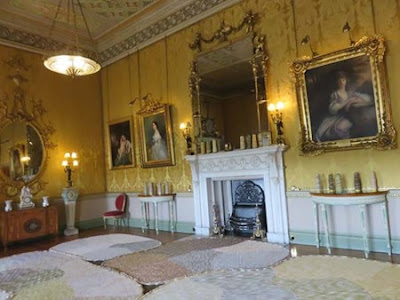 |
| Here you can see a fantastic original carpet. Just kidding. The craft exhibit strikes again. |
 |
| One thing that really strikes me in going through these photos is how differently they mixed colors in that era. They're not combos you'd commonly see today. |
More old 360s of Harewood...
Posted by Sophie Turner on Sunday, February 7, 2021
 |
| I was really disappointed they had put giant shelves up in the middle of the gallery so that it interrupted the view of the room. But it is still an amazing room! |
 |
| The dining room was probably the most substantially altered by Barry (in the 1840s) and has an almost neo-Jacobean ceiling plaster. |
 |
| Love this sideboard and wine chiller! |
 |
| That carpet! How I wish there weren't little ballet shoes all over it! |
Last batch of 360s, for now! (These are from Harewood)
Posted by Sophie Turner on Monday, February 8, 2021
We're heading below stairs, now, to the servants' quarters...
 |
| This was the servants' hall. |
 |
| This is the still room, which is not one you commonly get to see in these country houses. |
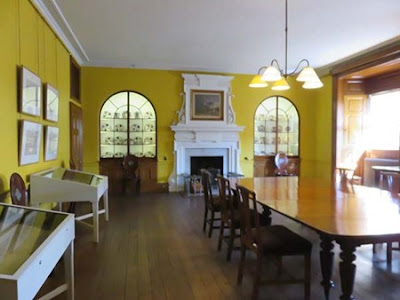 |
| This is the steward's room, and the quality of the room features and furnishings indicates his status within the household, although he is still on the service level. |
That's all for the inside of the house: I hope you enjoyed this close look at some amazing Georgian-era craftsmanship. But of course there is an outside as well, and it's really lovely.
If you have seen the Downton Abbey movie you may recall from the exterior shots that it's incredibly well-situated, with a terrace behind the house and then the landscaped grounds beyond. Be warned, there's some prominent statue nudity, although it's not super defined.
Beyond the formal terrace garden is landscape done by Capability Brown and later additions were made by Humphrey Repton, so this house has truly seen the work of FOUR of the greatest artists of the Georgian era.
I really loved the mix of formal and informal. The formal terrace came later, in the Victorian era, but I can't imagine the house without it.
That's all for this month's post, but I'll be back with another Robert Adam house next month, so we're not done with my architectural tours just yet!

































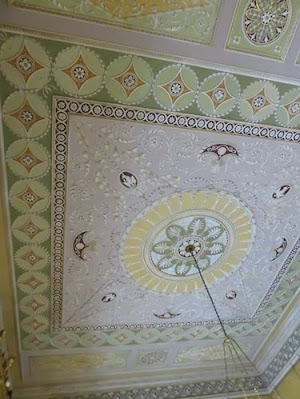





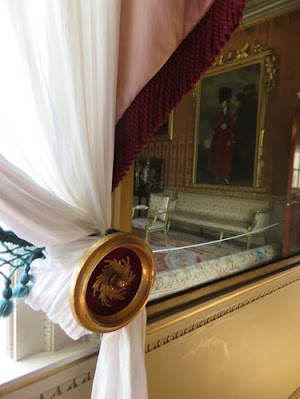
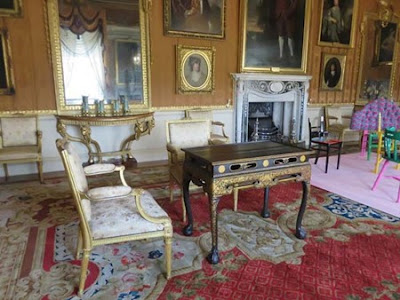


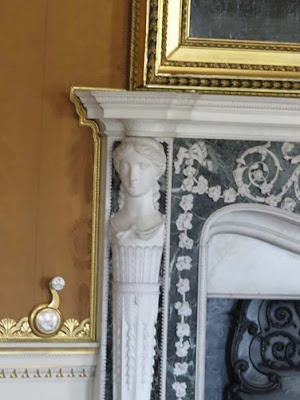













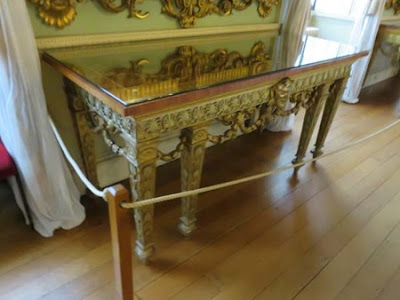



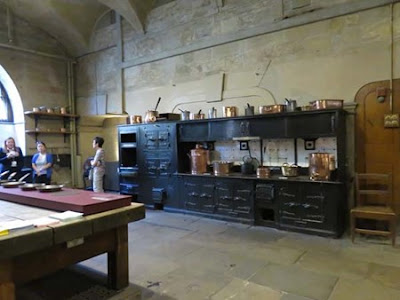


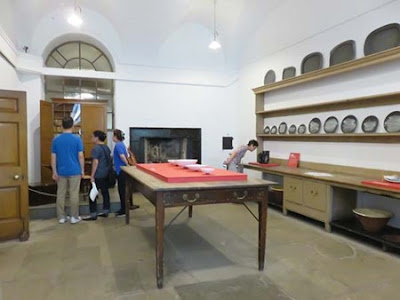

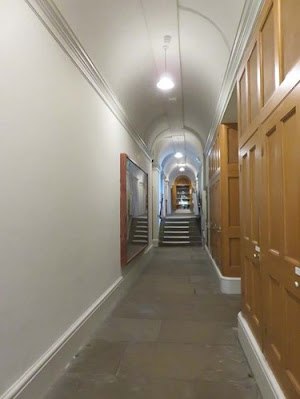













.jpg)

No comments:
Post a Comment